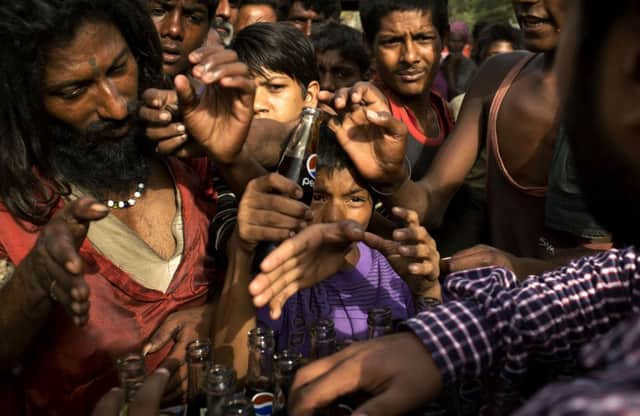India splashes £19m on giant statue


The plans for a 182-metre (nearly 600ft) tall replica of Indian independence leader Sardar Vallabhbhai Patel have caused an outcry in a country where poverty is widespread.
“How can they waste money on statue like that?” Rohtash, a vegetable seller in the capital, New Delhi, asked.
Advertisement
Hide AdAdvertisement
Hide Ad“The government could have used that money to reduce the price of rice. That would have been some help for poor people like us.”
It was the first budget of a new Hindu nationalist-led government elected on promises to revive stalled economic growth.
Others lamented how the budget earmarked more money for the statue than for women’s safety, which got 1.5 billion rupees (£14.6m), or the education of young girls at a billion rupees (£9.6m).
The move was criticised strongly on social media, with one sarcastic Twitter user saying: “Truly #budget2014 has something for everyone, even Sardar Patel.”
The Patel statue – which Indian officials say will be the tallest in the world – will stand on an island in the Narmada River in western Gujarat state, where prime minister Narendra Modi was chief minister for more than a decade.
The project was originally meant to be financed by the local government and donations of iron and cash.
Critics of Mr Modi’s Bharatiya Janata Party say the decision to lavish federal funds on the project is a political ploy to upset his foes in the rival Congress party.
Mr Patel, who died in 1950, was one of the most important members of the Congress party, which dominated Indian politics for almost 60 years after the country won its independence from British rule.
Advertisement
Hide AdAdvertisement
Hide AdMr Modi humiliated Congress when he came to power in May in the most decisive election victory India has seen in three decades. Now, his critics say, he is trying to appropriate one of the Congress’s most revered independence-era icons.
Elsewhere, the budget focused on promoting manufacturing and infrastructure as well as expanding the tax base. Finance minister Arun Jaitley said it would be a departure from the “mere populism and wasteful expenditure” that has dragged down Asia’s third-largest economy. However he indicated the budget deficit might rise from 4.1 per cent of GDP to 4.5 per cent next year but promised to cut it to 3.6 and 3 per cent in the subsequent two years. He indicated those reductions would involve overhauling expensive subsidies for food, fuel and fertiliser that cost India some £23 billion a year. He said the subsidies would be “more targeted”.
Investors welcomed the budget, with the Sensex stock index rising 1.6 per cent. Mr Jaitley said the government could not rely only on spending cuts to reduce the budget deficit and should also work to spur economic growth back to 7-8 per cent, which would result in higher tax revenue..
Sumesh Sawhney, from Jones Day, a legal firm that works with investors in India, said: “It’s not a big-bang budget, but it is not a disaster either.”